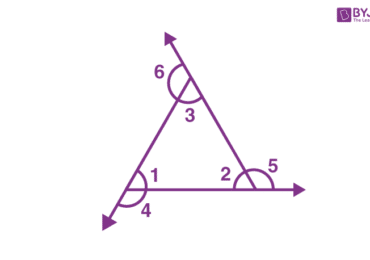Indirect characterization is the process by which the writer shows the character’s personality through speech, actions, and appearance. When you watch a movie or television show, you can usually gather what type of person the main character is based on the character’s actions and reactions in different situations. There isn’t a label on the screen that necessarily says ‘angelic, gullible teen’ or ‘selfish, arrogant villain.’ Instead, you have to watch and listen to that person to notice how the character’s personality is revealed through the story. By doing so, you are seeing how indirect characterization is being used on the screen. This also occurs in many novels and short stories. Instead of watching the character, you imagine the character in your head as you read descriptions of the actions and dialogue.
Direct characterization, or explicit characterization, is a method of describing the character in a straightforward manner: through their physical description (i.e. blue eyes), their line of work (i.e. a lawyer), and their passions and outside pursuits (i.e. voracious reader). Direct characterization is one of the most useful and common literary devices, however, when done incorrectly (or not at all), the result is a flat character.

Examples of Direct Characterization
- Odysseus reveals his pride and arrogance when he taunts the Cyclops by revealing his name as he and his men escape the Cyclopes’ island in the epic poem The Odyssey by Homer.
- Montresor, the narrator in Edgar Allan Poe’s short story “The Cask of Amontillado”, lets the reader know that he is a vengeful person when he explains his plan to seek revenge on Fortunato for insulting him.
- In the novel The Scarlet Letter by Nathaniel Hawthorne, Hester Prynne’s constant touching of the scarlet “A” on her chest reveals to the reader that she feels guilt and remorse for her sin, while also hinting that there is something deeper about her sin that hasn’t been revealed yet.
- George’s concern for Lennie in John Steinbeck’s Of Mice and Men reveals a softer side to George than he lets on. His gruff outer exterior is quelled by the fact that he tells Slim that he started watching out for Lennie after Lennie’s Aunt Clara died.
Direct Characterization Using External Factors
Direct characterization is the revelation of a character’s personality and values in an explicit way. Sometimes a narrator will identify character traits and qualities specifically by revealing them clearly to the reader.
Read Also: What Is Vertex Form? Example
For example, in Richard Connell’s “The Most Dangerous Game,” Rainsford, the protagonist, says “you’re a big-game hunter, not a philosopher,” in referring to Whitney, his hunting companion. At other times external direct characterization happens when the character discloses the information himself, usually when a story is told using the first-person point of view.
Direct Characterization Through Supplemental Elements
Direct characterization may also use peripheral information and supplemental sources to reveal more about a character, including observations from other characters, a character’s name, dress or mannerisms. For example, W.D. Wetherell’s “The Bass, the River, and Sheila Mant,” uses the narrator — a young boy – to reveal more about Sheila Mant through his observation of her: “If she lay flat on the diving board with her hand trailing idly in the water, she was pensive, not to be disturbed.” Authors may also use direct commentary or judgment to reveal more about a character.
Direct And Indirect Characterization
The indirect characterization should not be confused with direct characterization, which is when the reader or audience is told what the character’s personality is. The well-known phrase ‘show, don’t tell’ can apply to indirect vs. direct characterization. Indirect characterization shows who a character is based on what he/she does and says, while direct characterization tells the reader or audience exactly what type of person that character is.
Read Also: What Are The Agents Of Socialization? Example
Read the following excerpt from ‘Rip Van Winkle’ by Washington Irving: ‘He was a simple, good-natured man; he was moreover a kind neighbor and an obedient, henpecked husband.’ This description directly tells the reader about this man’s personality using words like simple, good-natured, kind, and obedient. There is nothing left for you to infer or conclude on your own. Therefore, this excerpt is an example of direct characterization. If Irving were to use indirect characterization in this description, perhaps he would’ve described a scene in which the man was calmly helping some rambunctious children cross the street or happily strolling through town, waving at people of all ages. The reader would then have to conclude that he was a kind, good-natured man without the writer ever having told him/her so.

Tips For Using Direct Characterization
Don’t Overdo It
Direct characterization is convenient. You can give readers information about your characters quickly, in a single phrase or sentence. For example, this direct character description of Mr. Bounderby in Charles Dickens’ Hard Times (1854):
‘So, Mr. Bounderby threw on his hat – he always threw it on, as expressing a man who had been far too busily employed in making himself, to acquire any fashion of wearing his hat.’
Read Also: Antiderivative Calculator – A Brief Introduction
Use Direct Characterization For Key Character Details
When introducing characters for the first time particularly, use direct characterization to give readers essential details. It’s easier to remember simply states facts, e.g. ‘She was a kind woman.’ Consider, for example, our first introduction to the character named ‘Mother’s Younger Brother’ (we’ll abbreviate ‘MYB’) in E.L. Doctorow’s classic novel Ragtime (1975):
‘Down at the bottom of the hill Mother’s Younger Brother boarded the streetcar and rode to the end of the line. He was a lonely, withdrawn young man with blond moustaches, and was thought to be having difficulty finding himself.’
Read Also: What Is Bass Clef Notes?








